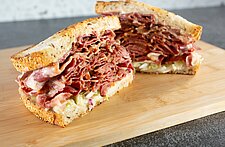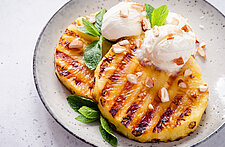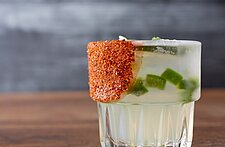In our first two posts, we presented freshness research from the USA and Mexico; we did so to prove a point. Despite a common border and many shared cultural aspects, perceptions of what freshness meant and represented were quite different between the two cultures.
How might Brazil compare to the USA and especially to Mexico? Same hemisphere that is true, but very different influences starting with language (Portuguese versus Spanish), patterns of immigration, food and beverage.
What do consumers in Brazil mean when they say something “feels or tastes fresh?” What does everyday freshness mean to Brazilians?
Freshness in Brazil
Responding to “freshness” in generalized terms, Brazilians frequently mentioned key words such as green, breeze, shower and beach. The comments about freshness were initially directed inward and most connected with personal hygiene. Virtually every panelist mentioned bathing and the smell of personal care products. Of panelists in the U.S., Mexico and Brazil, Brazilians seemed the consumers most associating everyday freshness with personal hygiene. For these consumers, freshness is about cool, clean and refreshing feelings. They also mentioned cold, crisp breezes, grasses, flowers and trees.
Regarding food and beverage references, freshness included: iced tea, lemonade, frozen Acai (berry) drinks, Champagne, mint and Caipiroska (sweetened vodka-lime drink).
Panel members were asked to define platforms that encompassed feelings about freshness. The four platforms or continents emerged as follows:
Invigorating & Vitality – Happy, Long Life, Cheerful, Friends, Music
Cleanliness – Confident, Kissing, Talking, Friendly, Sharing
Enjoyment – Freedom, Celebration, Smiling
Naturalness – Comfort, Caring for Nature
Deeper Elements of Freshness
From the four platforms, panelists identified two distinct areas that defined what everyday freshness might represent to the Brazilian consumer –“Enjoyment” and “Naturalness.”
In terms of flavors, “Enjoyment” favored mint, melon, citrus, pineapple, Acai berry. This group also preferred fruity and spicy fragrances. Their color preferences were primarily pastels to include green, blue, white and red; presumably softer reds or rose colors.
Those who defined “Naturalness” as everyday freshness enjoyed mint and herbal flavors, citrus, pear, berry, Acai and “juicy.” They preferred fragrances that were herbal, kiwi fruit and passion fruit. This group loves plants and flowers. Those in this category like eating fruit. Their color preferences lean heavily toward bright greens and blues.
The Freshness of Brazil
Freshness in Brazil differs from both the USA and Mexico. In developing flavors and fragrances for food or beverage, R&D should not assume that consumers in Mexico track with Brazil as to preferences. The “Fresh” and “Refreshing” elements in Mexico do not directly correlate to “Enjoyment” and “Naturalness” of Brazil. Mexican consumers use imagery of showers, beaches and water to view “fresh,” and to use that as a springboard directed toward “refreshing” and having a lot of fun. Brazilians base their reactions to freshness on personal hygiene references; the cleanliness they feel and the fragrances of the hygiene products themselves. They are highly oriented toward plants, trees, flowers and grasses and embrace fruity and spicy flavors and fragrances.





